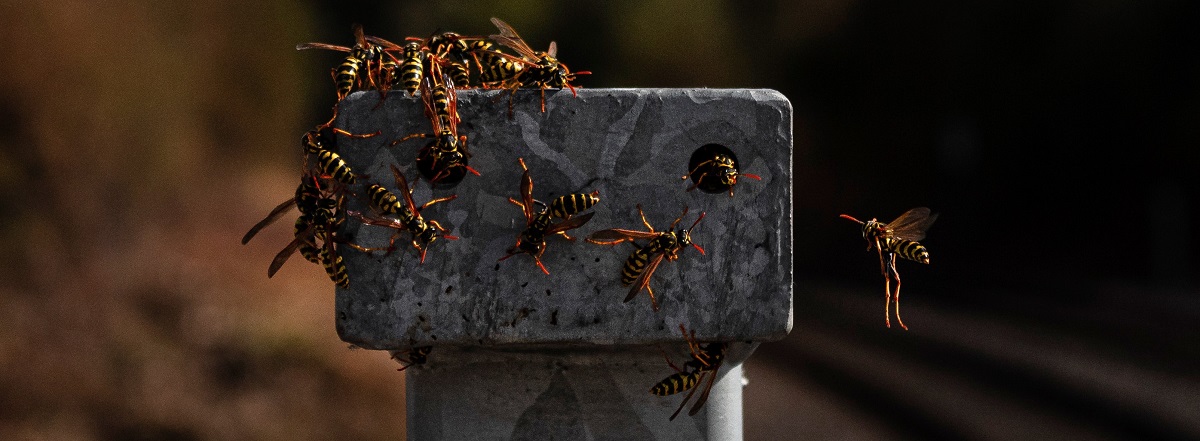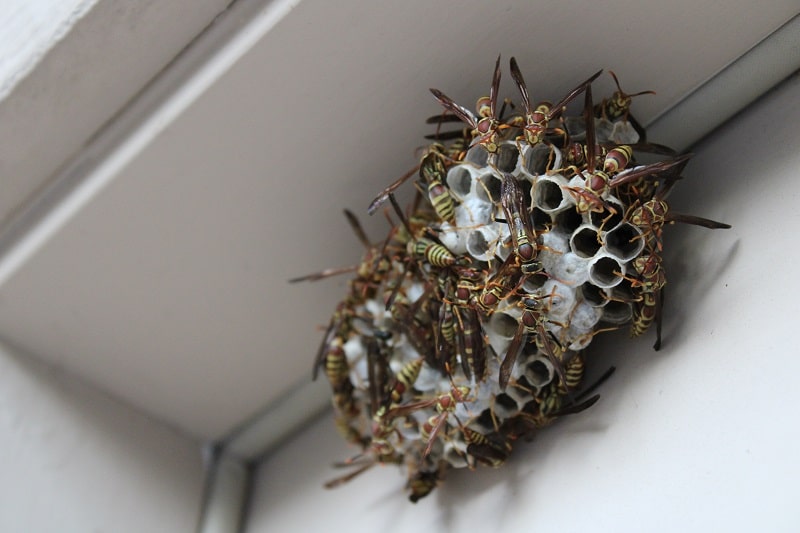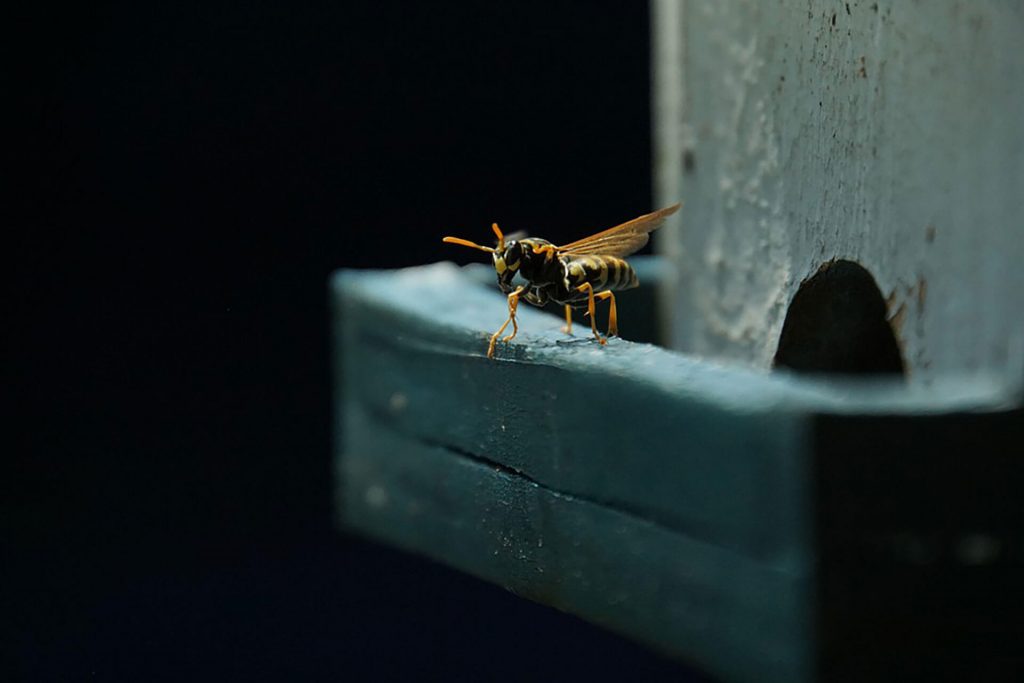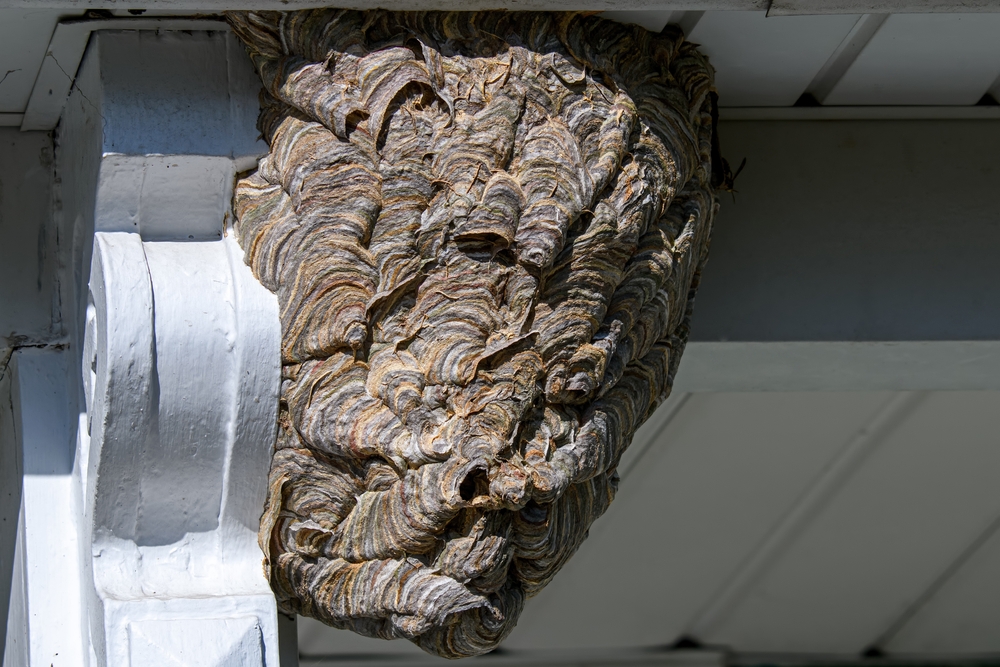
Stinging Insect Control
Depending on the location, the formation of a beehive or stinging insect nest can be a welcome addition or cause for concern.
Some bees, paper wasps, and hornets may build nests in attics, walls, under eaves, in soffits, under porches, and in tree branches. Other insects such as yellowjackets and some bees build their nests in the ground.
Social insects such as honey bees, hornets, yellow jackets, and paper wasps can build colonies containing thousands of workers. These insects will defend their nests.
Although a simple sting may not affect you too much, 5-7% of the popular are highly allergic to stinging insects. What’s worse is if you stumble across a hidden hive in the ground or one camouflaged in a tree, you could get attacked by a swarm.
If the entire hive feels threatened, they will swarm together, fly after an intruder, and attack all at once.
We can safely remove any stinging insect nests and hives including wasps, bees, yellow jackets, hornets, and paper wasps.
Stinging Insect Pest Control

Getting rid of stinging insects is often tricky since they can enter structures in a variety of ways and build their nests in unique places. Our knowledgeable technicians at Critter Control will assess the insect problem and any insect damage before using environmentally friendly pest control methods.
We can then help you establish an effective and long-lasting pest control plan for peace of mind when it comes to preventing future infestations.
Inspection
Every bird removal begins with a thorough inspection of the area of concern. Critter Control wildlife technicians first aim to discern the specific species causing issues for the homeowner, and whether they are federally protected. Wildlife Technicians use their knowledge of bird nests, visual identification, auditory calls, and bird behavior to identify the species in question.
Stinging Insect Hive Removal
Getting rid of bees without removing their nests is not enough. Hives may get moldy and attract other pests like rats, raccoons, and ants. Additionally, bees often take up residence in abandoned nests, so putting off removal may lead to future infestations.
Exclusion and Repair
Bees can build hives inside ceilings, wall cavities, and roofs. We repair any openings created to remove the hives. For beehives, we remove the honeycomb, clean up the honey, and sanitize the area. If nests or hives are built inside your home.
To avoid problems with the wasps and bees indoors, seal any cracks in building exteriors that might give them access.
Signs of Bees and Wasps
The surest sign is a sting, but you might also see or hear the pests flying. If the nest or hive is built inside your home, you might be able to hear a low, constant buzzing.
Stinging insects are most active during the summer. Wasps, hornets, bees and yellow jackets are all active at different times of the day.
Stinging Insect Locations
The easiest way to identify that a bird is occupying your space is by its telltale white droppings. Some areas of the house or yard may be appealing for birds as sites to settle or congregate, causing a buildup of bird droppings that is both unsightly and potentially dangerous.
As for raptors and owls, their excrement will not share the same characteristics as songbirds. The poop of larger bird species can be mistaken for mammals, as it is larger and similarly shaped. However, the feces of larger birds will have large quantities of animal fur.

Stinging Insect Damage
The primary causes for concern over stinging insects are the stings. In especially severe cases, the venom that bees, hornets, and wasps inject when they sting can trigger the onset of anaphylactic shock.

Bee Hive Removal
If the hive is in or on your home, it must be removed and the area cleaned.
An old hive left in your home could attract a new colony of bees. The hive area must be sanitized to remove any honey. Otherwise, leftover honey could attract other pests, including ants, cockroaches, rats, or raccoons.
Bees flying keep the honey from melting. Once the bees are gone, the honey will start to melt. A bee hive in the wall or ceiling will seep and stain.
Wasp Nest Removal
Nests in or on buildings may cause additional problems. A wasp infestation in the wall or attic buzzes loudly and can damage drywall, compromising structural integrity and allowing entry into homes.